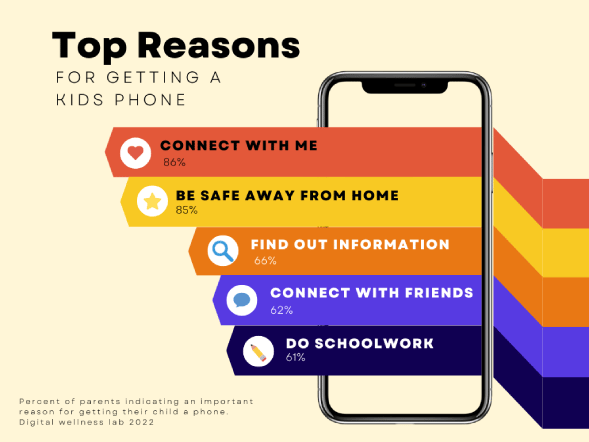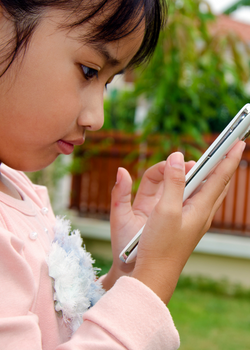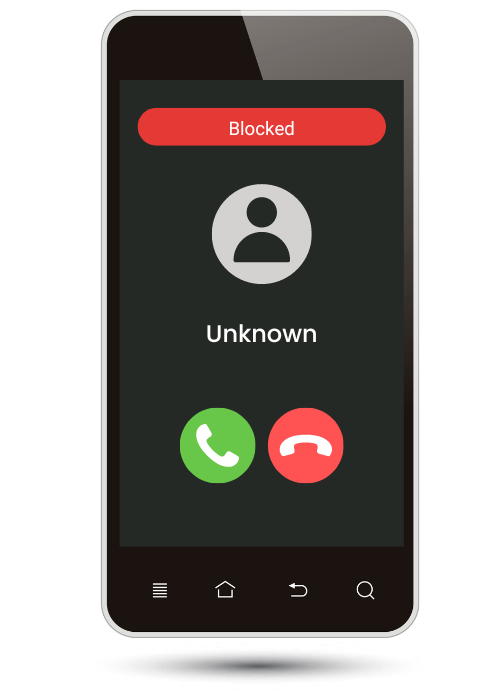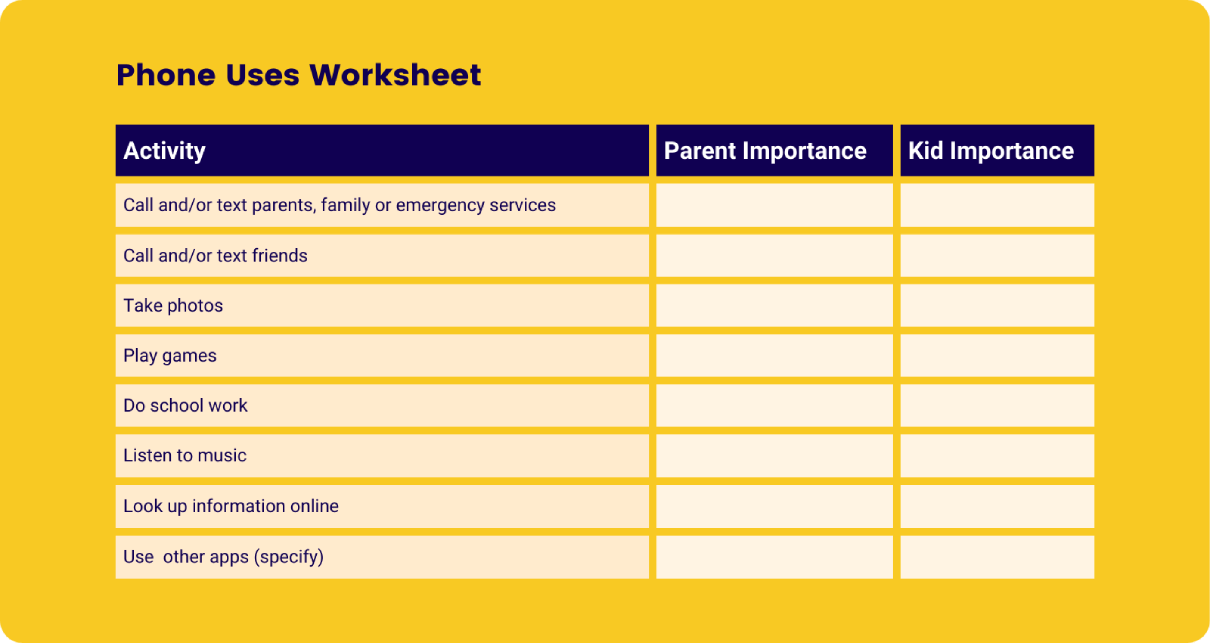
Kids Phones: What Parents Need to Know
Your kid is begging for a smart phone but you’re not sure it's a good idea.
You're not alone! All parents today have to face the decision of when is the right time to give their kid a phone and how to approach it wisely.
This short guide will reduce your overwhelm by helping you focus on your most important concerns and be confident when you give your kid their first phone.
Why give your kid a phone?
According to a survey by the Digital Wellness Lab, the most important reasons parents gave their kids phones were keeping their child safe, informed and in-touch with them.
An additional reason to have a phone for kids is that, in today's world, having a personal device is nearly universal for adults. As with other life skills, it takes time for them to learn to use it wisely.
A child often wants a phone long before they know what to do with it.
First, identify what you want your child to do with a phone and what you think should be off-limits for now. Then talk with them to find out how they expect to use a phone. Use the handy chart below to check off the activities you want your child to be able to do with their phone and star the most important ones. That will help you guide your conversation with your kid.
Experienced parents will tell you that these conversations are the most crucial part of giving a kid a phone, so it's smart to start having them before even giving them one.

What should I be concerned about with kids phones?
Now that you know why you want your kid to have a phone, and what they will use their phone to do, let's look at the potential concerns. Common challenges with kids' phones include:
- Too much time spent on the device instead of other activities
- Inappropriate content or communication with strangers or friends
- Caring for the device itself
Let's look at each of these and how to handle having a kids phone and avoid regrets later.
1. Spending too much time on the phone instead of engaging with the real world

Childhood can feel like a very long time. But given all the skills needed to be a functional adult — there's a lot for them to learn and do in those years.
According to one report, young kids spend between six to nine hours per day in front of their screens. Many games and apps are intentionally designed to capture attention. Adults often have a difficult time limiting their device use, and children have less capacity to resist these mechanisms. Without guardrails or limits, your child could spend hours on their phone instead of sleeping, doing homework, dreaming about their future, or interacting with friends and family in real life.
Many families already experience the conflict over setting limits with other devices like game consoles, tablets, and computers even before a kid phone enters the picture.
Recommendation: Agree on boundaries
Device use and "screen time" can cause a great deal of conflict between parents and kids with phones. To avoid conflict, clarity and communication both make a big difference. You want your child to understand and agree to the boundaries you set, and to participate in creating the agreements around device use.
You may already have agreements for other devices in your home. If so, make sure to extend these to phones as well. If you still need to define expectations, getting your child a phone is an excellent time to start.
Getting specific can help with clarity. Using a flashcard app to study, playing a video game, texting with friends, and using a meditation app are all distinctly different activities. Limiting all device use to a specific blanket amount per day may not be effective, especially as they get older. Understanding how your child uses their phone and thinking about the balance of their whole life will help guide the limits you set.
Some families find that a kid cell phone contract is helpful as a tool, to help guide the ongoing conversations about their use.
Parental control apps and kid-specific smartphones have functionality to hold the boundaries you've agreed. Ideally, you want to be able to monitor and manage your kid's phone without having to confiscate their device, and you want to be able to make sure their sleep is protected by limiting phone functionality at night. Learn more about the differences between tools here.

2. Inappropriate or problematic content
A smartphone can contain access to the entire world. And just like you probably wouldn't let your kid go to the local bar by themselves, there are places in the digital realm worth limiting.
From sexual content to violence, the web is full of inappropriate content for children. Kids can stumble on adult content and misinformation by following a curiosity, not understanding what something is, or just accidentally clicking on something.
Learning to search the web is an important part of the modern world, but having access to it on a phone in their pocket often leads to problems.
Recommendation: No web browsing on a kid phone, especially at first
If you do get a phone with a web browser, you'll need a filtering and monitoring app to block objectionable content. Be aware that a filter may cut down on exposure to these things, but it will not eliminate it. On websites and in apps, advertisements often bypass these filters since the content isn't always evident to the website or app publisher. Access to a web browser also gives them access to social media, so consider that as well.
Whether your child is ready for a browser on their phone or not, it is recommended to use filtering and monitoring software on all devices your child can access (computer, tablet, etc.), or to use a controlled WiFi router like Gryphon.


Recommendation: Block social media apps from your child’s phone, at least initially
Social media can contain plenty of inappropriate content and problematic communication. Child development research is clear on the harms of social media, especially for younger children. Multiple studies show that the more hours kids spend on social media, the more like they are to suffer from sleep deprivation, depression and anxiety, or to commit self-harm. When discussing your agreements around screens, talk to your child about social media apps and find out if that is part of their expectation in getting a phone.
In the later years of high school, you may want to allow them to use social media platforms with your oversight. But adding these apps to their first cell phone carries a risk of serious mental health issues and regrets. Some parental control apps allow you to block social media sites and apps, but kid-specific phones provide stronger walls and more clarity. Remember that social media can be accessed in unexpected ways through apps and via web browsers, so it's smart to know clearly what is in each app you allow.
3. Inappropriate or problematic communication
We’ve all seen the terrifying stories of children exploited and worse by predators online, but more common threats to most kids are closer to home. Younger children are typically cyberbullied via text rather than on social media platforms. Inappropriate content often comes through text messages, like sending or nude photos, even with classmates and people they know in real life.
Until your child has a thorough understanding of what is and isn't ok in digital communication, and has a handle on healthy relationship development, it's wise to supervise their digital communication.
Recommendation: Choose a device with a contact safelist
Choose a device with the capability to allow only approved contacts to call and/or text your child. Some phones do not allow image texting at all, while others give you the option to allow image texting to selected contacts. You might also want to limit friend-texting after bedtime, or while at school.
Recommendation: Monitor texting while your child learns
There are two basic approaches to monitoring text messages: proactive and reactive. Consider starting out with a more proactive approach where you review the content of text messages, especially with friends you have concerns about. Eventually you can move to a reactive approach, setting up alerts of anything concerning. Your child should be aware that you can monitor their communication and understand what your expectations are around appropriate texting. When you see something concerning, discuss it with your child, just as you would if you overheard it from your back seat.

4. Choosing and caring for the phone

Phones for kids can get pricey, and kids can be hard on them — drops, broken screens, loss and theft. If your child frequently loses or breaks their gear they may not be ready for a phone. And before you give them one, communicate your expectations for care and conditions for repayment or replacement if they are negligent. You'll also want to be clear about where they can and can't take their phone if there are limits with their school, or if all family devices stay out of bedrooms at night. These agreements might be covered in your cell phone contract, or during your initial expectation-setting conversations.
Recommendation: Compare costs and consider insurance
Whether you choose a kid-specific phone or add a monitoring app onto an adult phone, there are 3 primary costs: the kid phone itself, a parental monitoring subscription, and cell phone service. There are free monitoring apps, and some companies combine one or more of these costs, so it's wise to compare total costs over the amount of time your child will use the phone. Some companies require contracts of 1-2 years, so if you can’t cancel the contract, make sure to account for that entire amount. Also consider the warranty, insurance options, or replacement provisions.
You will also want to consider the limitations you want to set, the monitoring you want to be able to do, and choose a tool that best supports your family on your child's phone journey.
Next Steps
We hope you’re more clear on why you want your child to have a cell phone, why they want one, and the key features you need to look for based on your biggest concerns.
The next chapter will review the different types of phones for kids:
- Kid-specific phones like Pinwheel
- Adult phones with monitoring apps
- Basic non-smartphones like flip phones

_1.png?width=600&height=319&name=Phone%20worksheet_1%20(1)_1.png)
